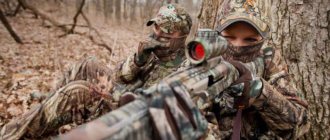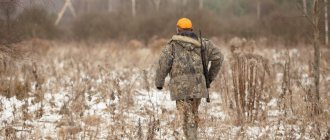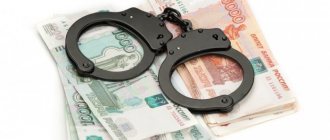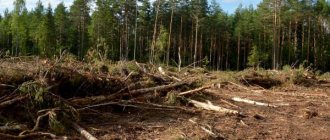Illegal hunting is a special crime, directed not so much against human health as against nature. Liability in this case is imposed under the Criminal Code, especially if the damage caused is considered major. However, in order for this or that penalty to be imposed, the act must be qualified specifically as hunting for animals and birds, carried out without observing the law and having the appropriate permit. Here the main role is played by the composition of the offense and its types.
The essence of illegal hunting
The essence of such a crime as illegal hunting (poaching) directly follows from the very concept of “hunting”. The latter is understood as a rather specific type of activity, consisting in searching, tracking, and extracting natural resources. In a specific case - birds and animals.
In the Russian Federation, hunting of various types is allowed. Fishing, sports, amateur, as well as for research purposes.
However, since, in a sense, hunting implies one of the options for using the animal world, uncontrolled actions of people in this case are unacceptable. Otherwise, the number of representatives of flora and fauna will begin to inexorably decline, which will lead to significant environmental losses, if not disaster.
Accordingly, hunting activities are regulated by law, which presupposes certain frameworks and rules on the basis of which a person is allowed to act. In particular, at the federal level, permissible types of hunting are established, as well as the parameters according to which they can be carried out in a specific territory.
For example, a hunter is obliged to act on the basis of compliance with the following standards:
- register in the hunting register;
- have a valid hunting license;
- obtain permission to carry/storage hunting weapons;
- obtain a permit for the extraction of natural resources (killing birds and animals).
The latter document largely determines the legality of the hunter’s activities.
The permit records the following information:
- information about the document user;
- the period during which the natural resource can be extracted;
- territory within the boundaries of which hunting is permitted;
- amount of extracted resources;
- type of hunting activity.
A document permitting the harvesting of animals and birds is valid only for the time frame and place indicated in it.
And it is precisely non-compliance with these rules or established hunting parameters that is interpreted as illegal activity. Moreover, if the act is properly qualified, then the fact of the crime committed will become obvious. In this case, the provisions of the Criminal Code will come into force, on the basis of which the culprit will be given an appropriate punishment.
Corpus delicti
To bring a person to justice for poaching, it will be necessary to prove the very fact of criminal actions that violate the law.
Qualifying hunting as an illegal act involves assessing the signs of a specific violation and identifying the correspondence between them. In the case of illegal hunting, the corpus delicti consists of the following points:
- The object of the illegal act is social relations aimed at protecting the natural world, its flora and fauna, as well as those related to the safety of representatives of the latter.
- The subject of the crime is animals and birds that are in their natural habitat and are not dependent on humans.
- The objective side is a gross non-compliance with hunting rules and related legislative norms. Such actions can cause major damage and provoke an imbalance in the ecological balance, reducing the number of bird and animal populations. Typically, such violations mean the absence of a hunting permit, the killing of animals in prohibited areas, the use of mechanical vehicles during hunting, as well as the hunting of birds and animals whose destruction is prohibited.
- The subject of a crime is any individual whose age has exceeded 16 years. A prerequisite is the sanity, capacity, and adequacy of the culprit.
- The subjective side is characterized by the presence of intent. In other words, at the time of the hunt the culprit must be fully aware of his actions, desire their continuation, clearly understanding that such behavior is illegal.
The act is considered committed from the moment the search, tracking or pursuit of the object begins. Moreover, it does not matter whether an animal or a bird was killed - the crime, one way or another, is considered completed. In this case, they talk about the formality of the violation. Here responsibility comes regardless of the result of hunting activities.
If we are talking about a crime that entailed major damage, then its completion depends on the fact of killing the animal. For example, hunting an elk or a red deer with a fatal outcome will be recognized as an act causing harm on a large scale. The final amount of damage caused is determined by the court.
Commentary to Art. 258 of the Criminal Code of the Russian Federation
1. The crime in question accounts for approximately one third of registered environmental crimes in various years, and it is characterized by a fairly high latency. Its social danger lies in the fact that the crime encroaches on the rational use of natural resources, jeopardizes the conservation of certain animal species, and can lead to disruption of the biological balance of wild animal populations.
2. The object of the crime is relations for the protection and rational use of wild animals.
The subject of the crime is wild animals and birds in their natural state, as well as those released for the purpose of breeding them. Animals and birds kept in zoos, circuses, cages, enclosures, fenced areas, etc. cannot be considered the subject of the crime in question. If they are captured, the actions of the perpetrators must be qualified as theft of someone else's property, and in case of shooting - as the deliberate destruction of someone else's property (Article 167 of the Criminal Code).
3. The objective side is characterized by illegal hunting in the presence of at least one of the conditions provided for in Part 1 of Art. 258.
Hunting is recognized as activities related to the search, tracking, pursuit of hunting resources, their extraction, primary processing and transportation of hunting resources (Federal Law of July 24, 2009 N 209-FZ “On hunting and on the conservation of hunting resources and on amendments to certain legislative acts Russian Federation" (as amended on December 28, 2010)). It is illegal if it is carried out without the appropriate permission, or contrary to a special prohibition, or by a person who does not have the right to hunt or has received a license without the necessary grounds, or outside designated areas, at prohibited times, using prohibited tools and methods.
———————————
NW RF. 2009. N 30. Art. 3735.
Lack of proper hunting permission means: hunting without a hunting license or with an expired ticket or a ticket issued to another person; hunting without a license for birds and animals, which can only be hunted if one is available; hunting without an agreement with procurement and hunting farms; hunting in a hunting area without a permit; shooting of an animal or bird in excess of the established norm or other species not provided for by the license, etc.
Prohibited places for hunting are provided for by regulations (for example, nature reserves, wildlife sanctuaries, green areas around cities and other populated areas, etc.).
Prohibited periods are the times when either all hunting is prohibited, or there is a ban on the hunting of certain species of birds and animals.
The list of prohibited weapons and methods is also specified in the regulations governing hunting rules. It must be borne in mind that it can be expanded by the legislation of the constituent entities of the Russian Federation.
Major damage as a consequence of the crime in question is established by the court for each specific case based on the cost, quantity of the kill, the prevalence of animals, their environmental value, etc. Such harm should, in particular, include damage caused by the shooting of bison, elk, and deer during illegal hunting.
The use of a motor vehicle or aircraft presupposes their use as an instrument of crime and has the same meaning as in the crime under Art. 256 of the Criminal Code. When determining a motor vehicle and an aircraft, one must proceed from their description in Art. Art. 263 and 264 of the Criminal Code.
The characteristics of the mass destruction of birds and animals are similar to the characteristics of this method in relation to the crime provided for in Art. 256 of the Criminal Code.
The list of birds and animals, hunting of which is completely prohibited, is contained in regulatory legal acts (for example, hunting rules). All types of hunting are prohibited on them due to their special value. These include birds and animals listed in the Red Book of the Russian Federation and the Red Books of the constituent entities of the Russian Federation.
Specially protected natural areas are understood as areas of land, water surface and air space above them, where natural complexes and objects are located that have special environmental, scientific, cultural, recreational and health significance, which are withdrawn by decisions of state authorities in whole or in part from economic use and for which a special protection regime has been established (Federal Law dated March 14, 1995 N 33-FZ “On Specially Protected Natural Areas” (as amended on December 27, 2009)).
For the concepts of “ecological disaster zone” and “ecological emergency zone”, see the commentary to Art. Art. 247 and 262 of the Criminal Code.
4. In terms of the composition of the crime in question, it is similar to the composition of illegal extraction (catch) of aquatic biological resources (Article 256 of the Criminal Code), and the moment of its end is also determined.
5. From the subjective side, the crime is characterized by direct intent.
6. The subject of the crime is a person who has reached the age of 16.
7. In part 2 of Art. 258 the following qualifying criteria are indicated: a) commission of a crime by a person using his official position; b) by a group of persons by prior conspiracy; c) an organized group. Their content is similar to the content of the same signs of a crime provided for in Part 3 of Art. 256 of the Criminal Code.
Methods of illegal hunting
If we consider in more detail, we can identify certain types of illegal hunting that occur throughout the country and are classified as criminal activities.
Illegal hunting can be expressed in the following:
- Conducting a hunt without the right to do so. If a person has not registered in the hunting registry and has not received the appropriate ticket, then his hunting of animals or birds will be illegal by default. The same applies to foreign citizens. However, instead of registering, such persons are required to enter into an agreement on the provision of services in the field of hunting. Foreign nationals are not entitled to a hunter's ticket.
- Lack of documented permission (certificate) to conduct hunting. It is this document that regulates the hunter’s capabilities, setting the limits of permissible activities.
- Harvesting an animal or bird in excess of the limit specified in the permit.
- Hunting breeds not included in the permit.
- Extraction of natural resources within prohibited periods. In particular, at a time when such activities are prohibited in principle.
- Hunting is not in the territorial zones indicated in the permit.
- Killing of valuable animals and birds listed in the Red Book. For example, hunting for bison, sika deer, snow leopard, leopard, stork, and flamingo is completely excluded.
- Hunting of animals and birds in prohibited areas. This includes nature reserves, green areas near populated areas, industrial zones, nature reserves, and areas near transport routes.
- Hunting in areas of environmental disasters or in areas where environmental emergencies have been recorded.
- Use of prohibited weapons or methods of hunting. For example, when hunting birds and animals, the use of gases or explosives is not allowed, because this is fraught with harm to both the health of citizens and the environment in the form of mass destruction of animals. In addition, the use of pneumatic weapons is not allowed, and shooting while in a mechanical vehicle is not allowed - a car, motorcycle, boat (while moving), aircraft, etc.
If the detained hunter has an expired permit or a document obtained on an illegal basis, then his activity will be equated to the absence of such paper, in other words, recognized as illegal.
Article 258. Illegal hunting (comments on the law)
The end of February means the end of the winter hunting season. Some of the forest inhabitants are beginning their mating games at this time, while others are already preparing to bear offspring. Due to warming, some are getting rid of hibernation ahead of time and looking for food... Hunting at this time for many species of animals is already prohibited. Let's not forget about responsibility.
Illegal hunting, if this act is committed:
a) causing major damage;
b) using a mechanical vehicle or aircraft, explosives, gases or other methods of mass destruction of birds and animals;
c) in relation to birds and animals, hunting of which is completely prohibited;
d) on the territory of a reserve, wildlife sanctuary, or in a zone of environmental disaster or in a zone of environmental emergency, -
shall be punishable by a fine in the amount of up to two hundred thousand rubles, or in the amount of the wages or other income of the convicted person for a period of up to eighteen months, or by correctional labor for a term of up to two years, or by arrest for a term of four to six months.
(as amended by Federal Law dated December 8, 2003 N 162-FZ)
2. The same act, committed by a person using his official position, or by a group of persons by prior conspiracy or by an organized group, -
shall be punishable by a fine in the amount of one hundred thousand to three hundred thousand rubles, or in the amount of the wages or other income of the convicted person for a period of one to two years, or by imprisonment for a term of up to two years with deprivation of the right to hold certain positions or engage in certain activities for a term of up to three years or without it.
(as amended by Federal Law dated December 8, 2003 N 162-FZ)
Commentary on Article 258
1. The object of the crime is environmental safety in the field of protection of wild animals (birds and animals).
2. The objective side of the crime is expressed in the action - illegal hunting, if it is characterized by such alternative features as: a) the consequence of the crime (causing major damage), which entails the inclusion in the objective side of the causal relationship between illegal hunting and these consequences, b ) by the method or instruments or means of committing a crime specified in the disposition of part 1 of the article in question of the Criminal Code, c) with a special object (in relation to birds and animals, hunting of which is completely prohibited, d) the place where the crime was committed (reserve, sanctuary, zone of environmental disaster, zone of environmental emergency).
3. Hunting includes such actions as tracking for the purpose of production, pursuit and the actual production of wild birds and animals. Being in hunting grounds with weapons, dogs, birds of prey, traps or other hunting tools or with hunted products is equated to hunting. In judicial practice, the following are recognized as signs of illegal hunting: a) hunting without appropriate permission or contrary to a special ban, b) by a person who does not have the right to hunt or has received a license without the necessary grounds, c) hunting outside designated areas, during prohibited periods, with prohibited tools and ways.
4. In accordance with the Federal Law “On Wildlife” of 1995, hunting is carried out by legal entities - on the basis of a license for the period specified in the license, and within the boundaries of a certain territory and water area; citizens - on the basis of personalized one-time licenses for the extraction of a certain number of objects of the animal world or for a specific period. The procedure for obtaining licenses by legal entities is regulated by the Regulations on the procedure for issuing long-term licenses for the use of wildlife objects classified as hunting objects, approved by the Order of the Ministry of Agriculture of Russia dated June 26, 2000 (with subsequent amendments). The procedure for issuing personalized one-time licenses is defined in the Regulations approved by the Order of the Ministry of Agriculture of Russia dated January 4, 2001.
5. Hunting contrary to a special ban is hunting for birds and animals that are not included in the List of Hunting Objects approved by the Decree of the Government of the Russian Federation of December 26, 1995 (with subsequent amendments, including as amended by the Decree of July 30, 1998 ). This List includes animals other than those listed in the Red Book of the Russian Federation and the Red Book of the constituent entities of the Russian Federation. According to the Federal Law “On Wildlife,” rare and endangered objects of the animal world are included in the specified Red Books of the Russian Federation and their subjects. The circulation of wild animals belonging to species listed in the Red Book of the Russian Federation is permitted in exceptional cases under a permit (administrative license) issued by a specially authorized state body for environmental protection in the manner prescribed by the Government of the Russian Federation. Hunting these animals without such permission is also illegal.
6. Hunting should be carried out only by persons entitled to it. The right to hunt with hunting firearms (based on the Regulations on Hunting and Game Management of the RSFSR, approved by the Resolution of the Council of Ministers of the RSFSR of October 10, 1960) belongs to citizens of the Russian Federation who have reached the age of 18, who have passed the test according to the rules of hunting, safety precautions for hunting, handling hunting firearms and having paid the state fee in the prescribed amount (in the regions of the Far North and equivalent areas, minors who have reached the age of 14 have the right to hunt with hunting firearms). A hunting license serves as proof of the right to hunt. The specification of these provisions is given in the Decree of the Government of the Russian Federation “On amateur and sport hunting in the Russian Federation” dated July 26, 1993.
7. Hunting carried out outside designated areas is hunting in violation of such conditions of the hunting license as the place of its production. Hunting during prohibited periods is hunting during a period when any hunting is prohibited or it is prohibited for individual birds and animals (prohibited periods are established by decision of the executive bodies of the constituent entities of the Russian Federation in order to regulate the number of wild animals and create conditions for their reproduction). Hunting with prohibited tools and methods is hunting using environmentally hazardous means and techniques, i.e. those that maim animals or cause their mass death. In accordance with the Federal Law “On Wildlife,” users of wildlife, and therefore those who hunt, are obliged to use humane methods when using wildlife. Lists of tools and methods for obtaining objects of the animal world (including hunting), permitted for use, are developed by the relevant specially authorized state bodies for the protection, control and regulation of the use of objects of the animal world and their habitat and are approved by the Government of the Russian Federation or the executive authority of the subject of the Russian Federation Federation. For example, the use of leg traps is prohibited (except for cases provided for by laws and other regulations of the constituent entities of the Russian Federation).
8. Thus, the first condition for classifying hunting as criminal is its illegality. The second is the presence of one of the conditions specified in the disposition of Part 1 of Art. 258: 1) illegal hunting causing major damage (clause “a”); 2) illegal hunting using a mechanical vehicle or aircraft, explosives, gases and other methods of mass destruction of birds and animals (clause “b”); 3) illegal hunting of birds and animals, the hunting of which is completely prohibited (clause “c”); 4) illegal hunting on the territory of a reserve, wildlife sanctuary, or in an environmental disaster zone or an environmental emergency zone (clause “d”).
9. In judicial practice, when deciding whether the damage caused by hunting is major, the number of hunted, damaged or destroyed animals, and the prevalence of animals are taken into account; their classification into special categories, for example, rare and endangered species, ecological value, significance for a specific habitat, hunting area and other circumstances of the crime. In each specific case, it is necessary not only to proceed from the cost of what is extracted and quantitative criteria, but also to take into account the environmental damage caused, i.e. harm caused to the animal world as a whole. Major damage is, for example, damage caused during illegal hunting by shooting bison, elk, and deer.
Illegal hunting, which caused large damage, refers to crimes with the so-called material composition, which, as already noted, requires establishing a causal connection between illegal hunting and the specified consequence (major damage). All other types of criminal hunting are classified as formal crimes.
10. The concept of a mechanical vehicle is defined in the Road Traffic Rules of the Russian Federation. This is a vehicle (other than a moped) driven by an engine, including any tractors and self-propelled machines. In relation to the specifics of the composition in question, these include cars, motorcycles, any road, construction, agricultural and other special machines (for example, a grader, scraper) and other mechanical means.
11. The concept of an aircraft is given in the Air Code of the Russian Federation. It is an aircraft maintained in the atmosphere by interaction with the air, different from the interaction with air reflected from the surface of the earth or water. Aircraft include airplanes, helicopters, gliders, airships, and balloons.
12. A mechanical vehicle or aircraft turns illegal hunting into a criminal offense in cases where these means are used directly in the process of hunting birds and animals, and not for delivering a person to the hunting site or transporting killed birds or animals.
13. The concept of explosives is understood in the same way as when describing the illegal extraction of aquatic animals and plants (Article 256 of the Criminal Code of the Russian Federation).
14. The criminal law does not specify the type of gas used during illegal hunting, and therefore hunting using any type of gas is criminally punishable.
15. Other methods of mass destruction of birds and animals include, for example, the use of pesticides, the use of nets, burning of vegetation, and rutting hunting.
16. Hunting for birds and animals, the hunting of which is completely prohibited, is, as already noted, hunting for animals listed in the Red Book of the Russian Federation and the Red Books of the constituent entities of the Russian Federation (the list of animals listed in these books is compiled taking into account international Red Book). Species of wild animals (and wild plants and mushrooms) that are in danger of extinction are listed in the Red Books. The Red Book of the Russian Federation includes, for example, the snow leopard, pink pelican, Japanese crane, and pink gull. With regard to birds and animals listed in the Red Book, hunting is allowed only in exceptional cases (for example, to regulate their numbers, to protect public health, to eliminate a threat to human life), which is regulated by the Decree of the Government of the Russian Federation of February 19, 1996 “ On the procedure for issuing permits (administrative licenses) for the circulation of wild animals belonging to species listed in the Red Book of the Russian Federation" and the Rules for obtaining objects of wildlife belonging to species listed in the Red Book of the Russian Federation, approved by the Decree of the Government of the Russian Federation of January 6 1997
17. The concept of the territory of a reserve, a wildlife sanctuary, an environmental disaster zone and an environmental emergency zone is given when characterizing the composition of the illegal production of aquatic animals and plants (Article 256 of the Criminal Code).
18. The subject of a crime is any person who has reached the age of 16.
19. The subjective side of the crime in case of illegal hunting causing large damage is characterized by direct or indirect intent, in other types of illegal hunting - only by direct intent.
20. Part 2 art. 258 provides for increased liability for illegal hunting committed by a person using his official position or by a group of persons by prior conspiracy or by an organized group. The content of these concepts is the same as in the illegal production of aquatic animals and plants (Article 256). Criminal Code of the Russian Federation






